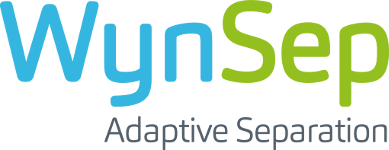Discover the Phytronix LDTD Source
The LDTD Source of the company Phytronix allows by completely eliminating the stage of liquid chromatography (HPLC / UHPLC) to considerably increase your analytical rates.
The LDTD® source makes it possible to very significantly reduce the analysis time and increase the rate of analysis by introducing and directly separating the compounds in the mass spectrometer completely eliminating the chromatography step.
The LDTD® source combines an APCI (Atmospheric Pressure Chemical Ionization) chemical ionization with a laser diode high-speed thermodesorption.
A sample can be analyzed every 4 to 10 seconds. You multiply your rates between 20 and 100 X. You can typically analyze more than 1000 samples in less than 2 hours.
The LDTD® source is “Plug & Play” and replaces the installed source initially installed on your device. It is easily interchangeable with the conventional source to easily switch from LDTD / MSMS mode to LC / MSMS mode.
It can automate the passage of 10 LazWell plates ie 960 continuous samples for 96-well formats and 3840 samples in 384-well LazWell mode.
The LDTD® source is for AB SCIEX®, Waters® and Thermo Scientific® AB mass spectrometer users in the Pharmaceutical, Medical, Legal, Environmental, and Agri-Food markets.
The targeted segments / laboratories are in-Vitro trials in the early stages of drug development, toxicology, general bioanalysis, water analysis and routine food and research laboratories.
THE PRINCIPE OF FONCTIONMENT
View the video “APCI LDTD Ionization Source for Mass Spectrometer” by WynSep:
Once the sample is introduced into Lazwell 96 or 384 wells, the 1 to 2 μl of solvent are evaporated and the plate is ready to be passed. The dry sample is thermodesorbed by the indirect action of a laser diode which irradiates the sample from the back of the plate (in red). The thin layer of stainless steel immediately transfers heat to the sample, which desorbs will produce a gas phase of neutral molecules.
A constant airflow (in blue) will drive the molecules through the transfer tube to the end where the Corona discharge needle will achieve APCI ionization.
The ions thus formed will then enter the mass spectrometer for analysis and detection.
This entire process takes about 10 seconds.
You can read other scientific papers to better understand the APCI process via the LDTD® source:
Posters presented at the ASMS:
Posters dealing specifically with the comparison between the LC-APPI, LC-ESI, LC-APCI and LDTD-APCI techniques.
EFFECTIVENESS OF APCI IONIZATION IN THE CASA OF LDTD
Diode Laser Thermal Desorption (LDTD) technology combines ultra-fast thermal desorption with an Atmospheric Chemical Ionization (APCI) process of a gas phase.
The introduction of a volume of between 0.5 and 10 μl into a well leads by evaporating the solvent to the formation of a nanoscale crystal layer on the stainless steel sheet forming the bottom of the well. Applying laser radiation to the back of the stainless steel layer for a very short time (typically 4-6 seconds) allows the substance in the form of nano-crystals to thermally desorb into the gas phase. neutral compounds and at a temperature below the melting point. In addition, the newly desorbed molecules enter a gas flow at 3 l / min, which acts as a heat buffer.
The internal energy of the molecules is dissipated through elastic collisions with the carrier gas molecules moving in a transfer tube maintained at room temperature. This process decreases the occurrence of thermal fragmentation.
Neutrals enter the Corona discharge area to undergo APCI. The main source of protons (APCI +) is provided by the water contained in the compressed air of a bottle or compressor. The research demonstrated the presence of H3O + and (H2O) H3O + ions as the species initiating ionization by a direct proton transfer reaction. Unlike traditional APCI where proton transfer occurs via protonated solvent molecules or water clusters ((H2O) nH3O + where n ≥ 3) the proton transfer involved in the LDTD is very efficient.
ABOUT SAMPLE PREPARATION
The LDTD® source is compatible with all types of extraction procedures such as liquid-liquid extraction, SPE and protein precipitation. Small adjustments may be necessary to perform LDTD analysis such as dilution of the extract, increasing the volume of the organic phase (liq-liq extraction), decreasing the sample size or increasing washing steps in SPE. The LDTD® source is very robust to the often observed ion suppression phenomena. A highly concentrated solution of salts (10 mg / ml in water) can be analyzed in LDTD without observing ionic suppression. During the thermal desorption phase, the salt remains in the well when the molecules of interest are transferred into the gas phase and subjected to APCI ionization.MAINTENANCE / SERVICE
The LDTD® source requires only compressed air. No solvent, no tubing to inspect and no leakage. The installation is carried out by us and the equipment is guaranteed 1 year parts, labor and travel. We also offer qualifications (QI / QO / PQ) upon request.THE APPLICATIONS OF THE LDTD SOURCE
The LDTD Source is the ideal technology for high throughput quantitative analysis of a myriad of compounds regardless of their polarity and melting point. LDTD has been used successfully to analyze compounds in blood, plasma, urine, human liver microsomes, biological buffers, drinking water, sludge, sediment, cow’s milk, honey and many more. .
PHARMACEUTICAL
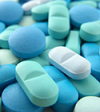
In the early stages of finding new drugs, a candidate must be characterized to make the critical decision to go further or stop the development process there.
In this process adsorption, distribution, metabolism, excretion and toxicology (ADMET) must be evaluated within a living organism. Therefore, increasing the flow of analysis for such analyzes is essential.
So far, the “bottleneck” is the LC-MS / MS analysis. Using the LDTD for ADMET studies, you perform a scan every four seconds which greatly increases your productivity compared to your conventional LC-MS / MS method.
In addition, many other applications, such as pharmacokinetic studies, can benefit from this speed of analysis.
In a world where productivity means higher throughput, all labs would like to work with technology that provides 10 to 100 times faster analysis than their current LC-MS / MS system.
Quantification of drugs in the plasma sample can be as fast as 4 seconds per sample without compromising your accuracy.
You want more information to understand how the LDTD source performs your drug quantification … Click here to view the applications.
CONTRACT RESEARCH ORGANIZATION – CRO

TOXICOLOGY
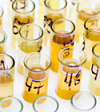
And if you could do drug tests in less than 4 seconds, for example … That’s exactly what LDTD can do on a daily basis.
Drug testing in urine and plasma using LDTD ionization is 50 times faster than published data.
Rapid screening combined with accurate quantification results will allow your lab to increase your analytical capacity and reduce your sequences.
And now ? Discover the LDTD source used in toxicological analyzes.
Being “green by nature”, LDTD analysis and the environment is a natural alliance.
Analysis of BTEX in urban air, endocrine disruptors and identification of antibiotics in surface water exposure show how the LDTD source can perform trace analysis in environmental matrices.
ENVIRONMENT
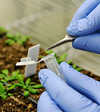
ALTERNATIVE MATRICES
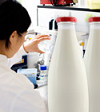
In a world where health and quality control issues are so important to our society, very fast methods for characterizing foods are needed. The food industry has its own problems to ensure the protection of all.
Complex matrices such as food are a challenge for all analytical systems. The robustness of the LDTD and its speed are the solutions for this kind of challenge allowing, for example, the analysis of cow’s milk and honey for antibiotic residues without a long preparation of the sample.
NEED A DEMONSTRATION?
For all your evaluation requests you can contact our sales department.
We propose two approaches:
1 / Sending your samples to Phytronix. An analysis report is generated according to the criteria that have been defined in advance. The evaluation can be done with an LDTD® source configured in 96 or 384 wells. The Mass Spectrometer models available for evaluation at Phytronix are:
ThermoFisher TSQ Vantage triple quadrupole
Waters XEVO TQ MS triple quadrupole
Sciex 5600 Triple TOF
2 / Evaluation in your Laboratory. In this case we send the LDTD® source to your laboratory. We travel to your home for installation, training and to assist you for a week. At the end of this first week you keep the source up to three additional weeks to work on your application freely. The service is totally free except for consumables (LazWell).
MODELS AND COMPATIBILITY
The LDTD® source is fully Plug & Pay and installs on AB SCIEX®, Waters® and Thermo Scientific® AB mass spectrometers and all types of analyzers (Triple Quad, QTOF, Ion Trap, Triple Quad Hybrid) and linear ion trap).
The LDTD® source is controlled directly from your existing mass software. You program your usual sequence and each sample can be desorbed under different laser power conditions to optimize your analyzes.
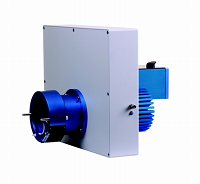
S-960 / S-3840 for SCIEX® Spectrometers
Compatible models:- API 3000, 4000 and 5000 Triple Quadrupole
- Q TRAP 3200, 4000
- AB SCIEX Q TRAP 5500
- AB SCIEX TripleTOFTM 5600
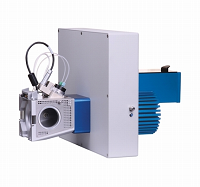
T-960 / T-3840 for Thermo® Spectrometers
Compatible models:- TSQ Quanttum serie Triple Quadrupole
- TSQ Vantage Triple Quadrupole
- LTQ XL
- Orbitrap
- Exactive
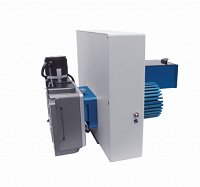
WX-960 / WX-3840 for Waters® Spectrometers
Compatible models:- Synapt G2 (model HDMS and MS)
- Xevo G2 QTof
- Xevo QTof MS
- Xevo TQ MS
- Xevo TQ-S
- ACQUITY TQD
THE LAZWELL PLATES
LAZWELL plates are available in 96- or 384-well formats. They have been specially developed to work with the LDTD Source.
They are compatible with the robots of preparation which makes it possible to automate the preparation of your plates LAZWELL.
A non-exhaustive list below gives you an overview of the automata that are already working on the LAZWELL plates preparation:
- The Zephyr of Caliper Life Science (a poster was exhibited at the ASMS 2009, 57th edition) </ li>
- The STAR Line from Hamilton Robotics </ li>
- The Biomek FX from Beckman Coulter </ li> </ Ul>
* For 96-well formats (degressive rates depending on quantities):
| References | Number of units |
| LazWell96-10 LazWell96-100 LazWell96-1000 | 10 100 1000 |
* For 384-well formats (degressive rates depending on quantities):
| References | Number of units |
| LazWell384-10 LazWell384-100 LazWell384-1000 | 10 100 1000 |
